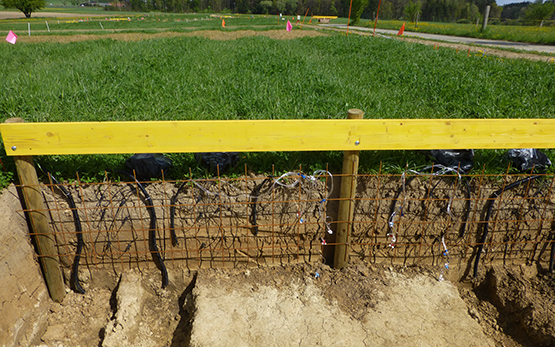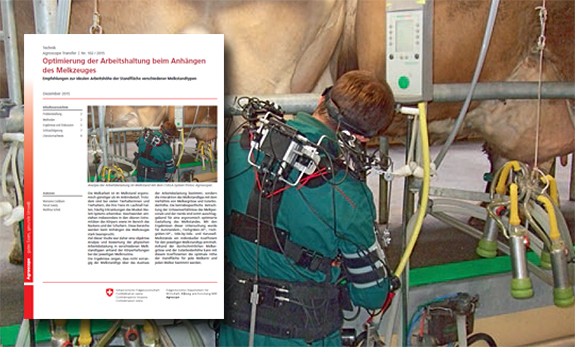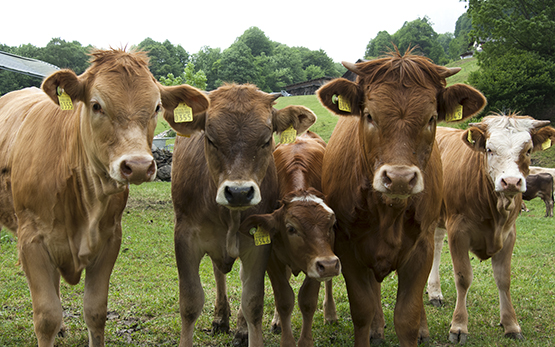Kramer K., Oriani F., Schneider M. K., Aasen H., Calanca P.
Integrating Sentinel-2 information into a growth model for assessing Alpine grassland dynamics under climate change.
Dans: European Geoscience Union Annual Meeting 2024. 15 April, Vienna. 2024, 1-37.
Meyer M., Fuchs P., Pauler C., Schneider M. K., Probo M.
Potential und Wirtschaftlichkeit virtueller Zäune.
Dans: Fachtagung Landtechnik im Alpenraum. 4. April, Feldkirch. 2024, 1-17.
Fuchs P., Stachowicz J., Schneider M. K., Probo M., Bruckmaier R. M., Umstätter C.
Stress indicators in dairy cows adapting to virtual fencing.
Journal of Animal Science, 102, 2024, 1-17.
Pauler C., Mettler D., Alföldi T., Willems H., Werder C., Schneider M. K.
Communicating knowledge on grassland management using videos and online fact sheets.
Dans: AgroVet-Strickhof Tagung: Vernetzung von Forschung und Praxis - mit smarter Tierhaltung in die Zukunft. 07 November, Lindau. 2023.
Confessore A., Schneider M. K., Pauler C., Aquilani C., Fuchs P., Pugliese C., Dibari C., Argenti G., Probo M.
Does age affect learning capacity and grazing activities of dairy cows managed with a virtual fencing system?
Dans: AgroVet-Strickhof Tagung: Vernetzung von Forschung und Praxis - mit smarter Tierhaltung in die Zukunft. 07 November, Lindau. 2023.
Schneider M. K., Willems H., Werder C., Mettler D., Pauler C.
Séneçon des Alpes (Senecio alpinus).
Ed. Patura Alpina, 2023, 8 pp.
autres langues: allemand | italien
Fuchs P., Stachowicz J., Schneider M. K., Probo M., Bruckmaier R. M., Umstätter C.
Conditioning dairy cows to a virtual fencing system is compatible with animal welfare.
Dans: ASAS-CSAS-WSASAS Annual Meeting. 16 July, Ed. American Society of Animal Science, Albuquerque. 2023, 334-335.
Fuchs P., Stachowicz J., Schneider M. K., Probo M., Bruckmaier R., Umstätter C.
What are the effects of adapting dairy cows to a virtual fencing system on animal welfare and pasture management?
Dans: AgroVet-Strickhof Conference: Current and Future Research Projects. 7 November, Ed. AgroVet-Strickhof, Lindau. 2023, 12.
Fuchs P., Stachowicz J., Schneider M. K., Probo M., Bruckmaier R., Umstätter C.
Welche Auswirkungen hat die Anpassung von Milchkühen an ein virtuelles Zaunsystem auf das Tierwohl und das Weidemanagement?
Dans: AgroVet-Strickhof Tagung: Vernetzung von Forschung und Praxis - mit smarter Tierhaltung in die Zukunft. 7. November, Ed. AgroVet-Strickhof, Lindau. 2023, 1-12.
Schneider M. K., Pauler C., Willems H., Werder C., Mettler D.
Arbustes nains.
Ed. Patura Alpina, 2023
autres langues: allemand | italien
Pauler C., Willems H., Werder C., Mettler D., Schneider M. K.
Ontano verde (Alnus viridis).
Ed. Patura Alpina, 2023
Schneider M. K., Pauler C., Willems H., Werder C., Mettler D.
Vératre blanc (Veratrum album).
Ed. Patura Alpina, 2023
autres langues: allemand | italien
Schneider M. K., Pauler C., Willems H., Werder C., Mettler D.
Fougère aigle (Pteridium aquilinum) et fougère mâle (Dryopteris filix mas).
Ed. Patura Alpina, 2023
autres langues: allemand | italien
Schneider M. K., Pauler C., Willems H., Werder C., Mettler D.
Rumex des Alpes (Rumex alpinus).
Ed. Patura Alpina, 2023
autres langues: allemand
Willems H., Brülhart J., Mettler D., Werder C., Pauler C., Schneider M. K.
Chardons.
Ed. Patura Alpina, 2023
Schneider M. K., Pauler C., Willems H., Werder C., Mettler D.
Joncs (espèces Juncus).
Ed. Patura Alpina, 2023
autres langues: allemand | italien
Pauler C., Schneider M. K., Alföldi T., Willems H., Werder C., Mettler D.
Wissen für die Alp: www.patura alpina.ch.
Dans: Waldhoftagung. 26. August, Langenthal. 2023, 1.
Fuchs P., Stachowicz J., Schneider M. K., Probo M., Bruckmaier R., Umstätter C.
Behavioral and welfare responses of dairy cows learning a virtual fencing system.
Dans: Book of Abstracts of the 74th Annual Meeting of the European Federation of Animal Science. 26 August – 1 September, Ed. EAAP, Lyon (FR). 2023, 1-11.
Hiltebrand C., Roig-Pons M., Baumgartner M., Cockburn M., Doetterl S., Bachmann I., Keller T., Briefer S., Würbel H., Gmel A., Pauler C., Schneider M. K., Nasser R.
Site expérimental de Saint-Aubin : Projets de recherche en cours.
Dans: Jeudi au Haras. 20 juillet, Avenches. 2023, 1.
autres langues: allemand
Zehnder T., Schneider M. K., Lüscher A., Giller K., Silacci P., Messadène-Chelali J., Bérard J., Kreuzer M.
The effects of Alnus viridis encroachment in mountain pastures on the growth performance, carcass and meat quality of Dexter cattle and Engadine sheep.
Animal Production Science, 63, (12), 2023, 1248-1260.








